Micronations, or self-declared sovereign states, have caught the world’s attention. These unique political entities have their own flags, anthems, and currencies. They challenge the usual ideas of statehood.
Places like the Principality of Sealand and the Republic of Molossia show the diversity of micronations. They are a mix of political statements, cultural expressions, and quirky projects.
In recent years, micronations have grown in number. They are driven by different reasons, such as political rebellion, social satire, and the quest for economic freedom. These nations can be found in remote areas or online. They reflect our desire for independence and creativity in shaping our political world.
What Are Micronations?
Micronations are small entities that claim to be their own countries but are not recognized by other nations. They have their own people, land, government, and try to make friends with other countries. The idea of micronations started in the 1970s, thanks to the International Micropatrological Society.
Some old groups are now called micronations. For example, the Kingdom of Araucanía and Patagonia since 1860, and the Republic of Parva Domus Magna Quies since 1878.
Definition and Characteristics
Micronations say they are their own countries but don’t have the legal backing to be seen as real nations. They make their own money, flags, stamps, passports, and medals. Some even use these items to make money.
Historical Context
The idea of micronations started in the 1970s, thanks to the International Micropatrological Society. This led to the creation of many micronations in Australia in the 1970s and Japan in the 1980s. The rise of the internet in the 1990s made micronations more about hobbies, with many online or just for fun.
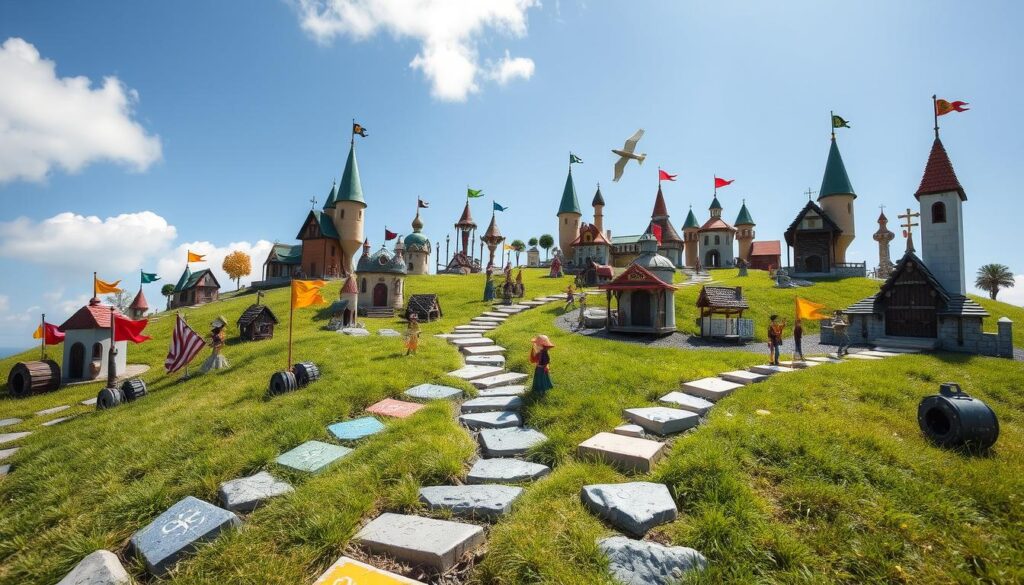

“Micronations are self-declared nations that perform and mimic acts of sovereignty but lack a foundation in domestic and international law, remaining unrecognized as nations by domestic or international forums.” – Harry Hobbs and George Williams, legal academics
Famous Micronations Around the Globe
Micronationalism is a unique concept with many examples worldwide. Places like the Principality of Sealand and the Republic of Molossia show the quirky side of micronations. They offer a peek into a world of tiny, unrecognized states.
The Principality of Sealand
The Principality of Sealand is well-known. It was started in the 1960s off England’s coast. It’s built on an old World War II platform. Sealand has its own passports, currency, and military.
It has over 300 citizens. Sealand is a symbol of micronationalism and the dream of independence.
The Republic of Molossia
The Republic of Molossia is in Nevada, USA. It’s run by President Kevin Baugh. This country has its own space program and currency based on Pillsbury cookie dough.
Molossia celebrates its independence. It has a diverse culture. Despite being small, it engages in diplomacy with other micronations.
Other Notable Examples
- The Kingdom of Asgardia, the world’s first “Space Nation”
- The Royal Republic of Ladonia in Sweden, started in the 1970s
- Freetown Christiania, a self-governing area in Copenhagen, Denmark
- The Empire of Atlantium, with a population of around 3,000
- Other Worlds Kingdom in the Czech Republic, founded in 1996
These micronations show the diverse and quirky side of micronationalism. They have unique laws and vibrant cultures. These self-proclaimed countries fascinate many people.
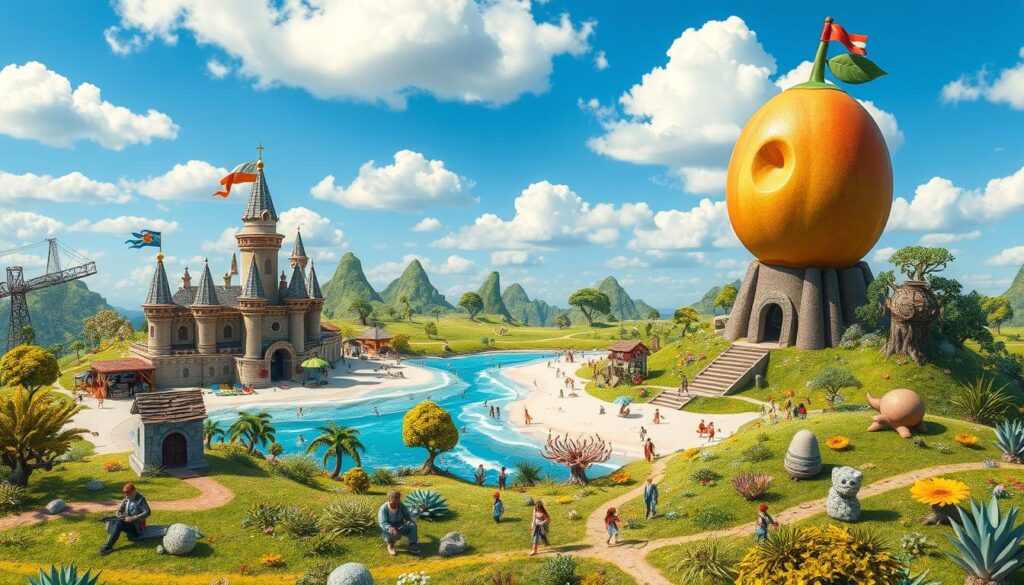

The Reasons Behind Micronations’ Creation
Micronations come into being for many reasons. They often stand as symbols of cultural identity, political dissent, and economic freedom. These tiny nations offer fresh views on what it means to be a state.
Political Statement
Some micronations, like Sealand, were created to push back against too much government control. Others, like Ladonia, started as disputes over art and land. Asgardia, for example, is focused on preparing for space travel by figuring out how to govern.
Cultural Expression
Many micronations are a form of satire or art. They let people question what a nation really is. These tiny states are places where people can explore and show off their unique cultures and values.
Economic Independence
Some micronations want to break free from the usual economic rules. Molossia has its own money, the Valora, tied to the price of Pillsbury Cookie Dough. Ladonia sells noble titles for $12,000, making money for the micronation.
“Micronations are motivated by experimentation, political protest, artistic expression, entertainment, and sometimes criminal activity.”
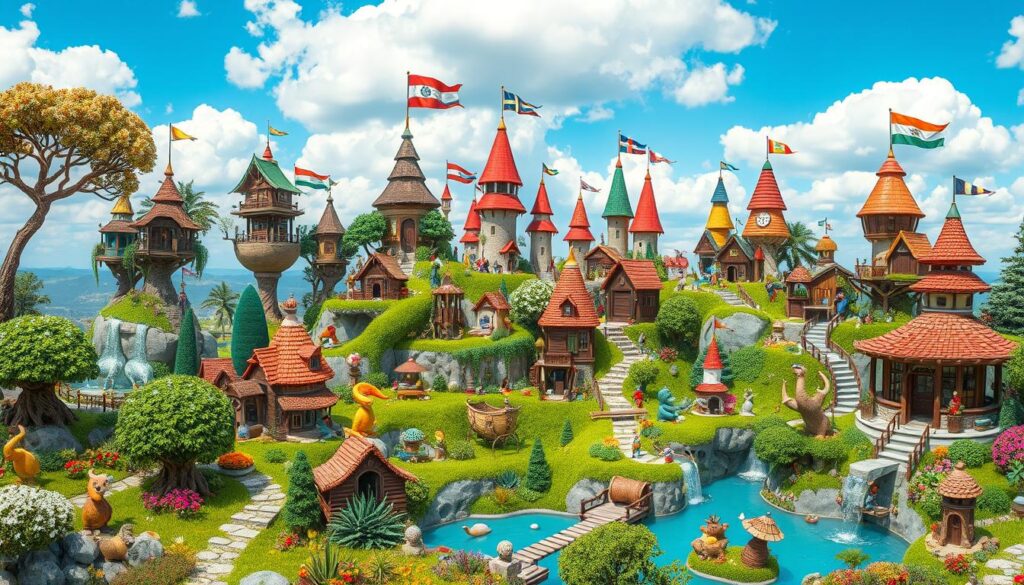

Since the 1970s, over 400 micronations have been recorded. These tiny countries give people and groups a chance to show their cultural identities and challenge the usual power structures.
How Micronations Are Governed
Micronations have their own special ways of governing and making laws. They are tiny, self-proclaimed countries that try out new ways of and challenge traditional .
Unique Legal Frameworks
Some micronations, like the Principality of Ladonia, have a monarch and a cabinet with funny titles. Others, like the Republic of Molossia, use mannequins as civil servants. This makes their governance quite different.
Citizenship Issues
Getting citizenship in a micronation can be special. Many micronations let you apply online or accept donations to become a citizen. For example, the Kingdom of North Sudan has ambassadors in Europe, even though it’s not officially recognized.
The governance and legal systems of micronations vary. Some are serious attempts at creating real systems. Others are more playful, commenting on what it means to be a country.
“Micronations are tiny countries created by ordinary people in a manner that mirrors the formation of sovereign states.”
– Judy Lattas, Anthropologist
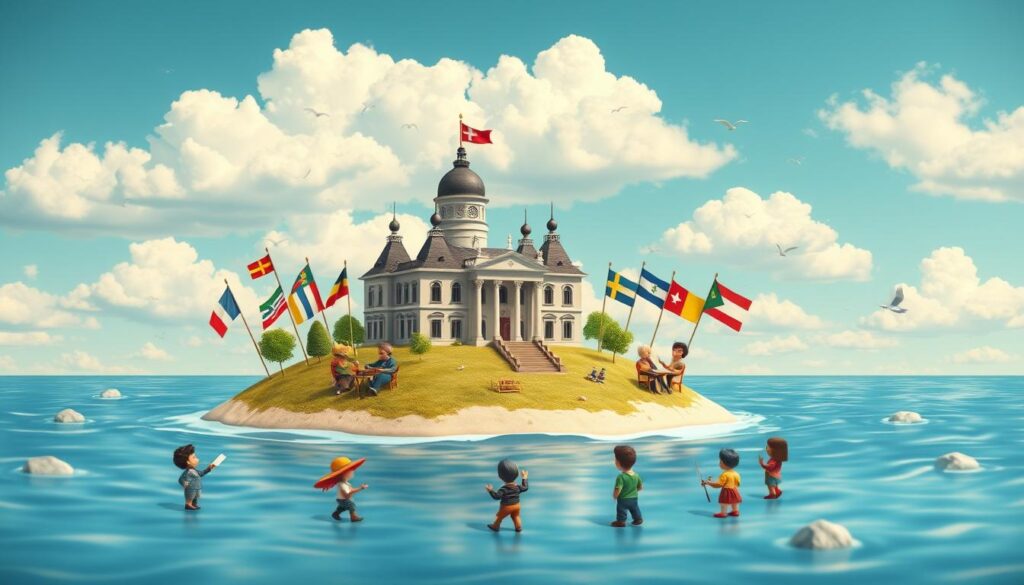

Even though most micronations aren’t recognized by other countries, their unique and are still interesting. They inspire people looking for new ways to organize a state.
The Role of Technology in Modern Micronations
Technology is key in the growth of modern micronations. These small, self-proclaimed countries use digital tools to show their presence. They connect with people worldwide and explore new ways of being sovereign.
Digital Sovereignty
Many micronations are using blockchain and virtual spaces for digital governance. They create “metanations” that mix physical land with online communities. For example, Sealand is looking into blockchain to strengthen its digital sovereignty.
These steps challenge old ideas of statehood. They aim to redefine what it means to control territory.
Social Media Influence
Social media helps micronations get noticed and connect with online communities. They share their stories, cultural practices, and reach out to supporters globally. This digital interaction has helped some micronations gain a worldwide following.
Technology plays a big role in modern micronations. They use it to show who they are, grow their influence, and change what sovereignty means today.
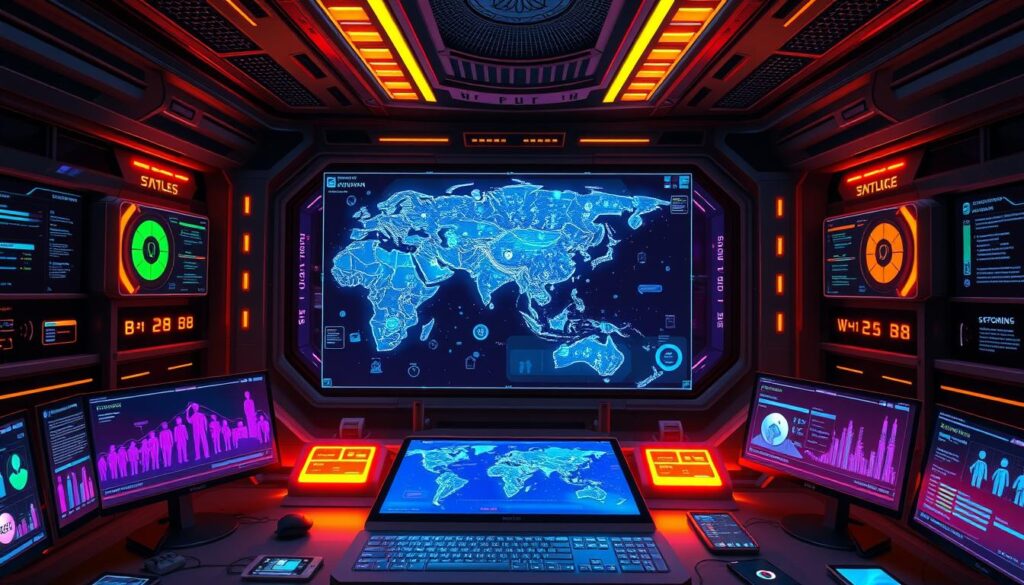

The Quirky Laws of Micronations
Micronations are tiny, self-proclaimed states with their own laws. They show off their unique identity through these rules. For example, the Principality of Hutt River declared war on Australia in 1977. The Republic of Molossia has its own postal system.
Bizarre Regulations
The Principality of Hutt River started in 1970 over a wheat harvest. Prince Leonard Casley led it for over 50 years. It famously declared war on Australia, sending a telegram to the Governor-General.
Two days later, the war ended. Micronation founders often try to prove their independence through law. They use principles like the Magna Carta to support their claims.
Notable Legal Cases
- The Grand Duchy of Westarctica claimed part of Antarctica using a loophole in the Antarctic Treaty. This shows their creative legal approach.
- Statehood is seen as a political idea, with few rules from the Montevideo Convention. This makes it hard for micronations to prove their legal status.
- Despite their unique laws, micronations often get into disputes with big countries. This shows the complex relationship they have with the world’s legal systems.
These unconventional laws and legal fights show what makes micronations special. They keep challenging traditional legal systems and stand out on the world stage.
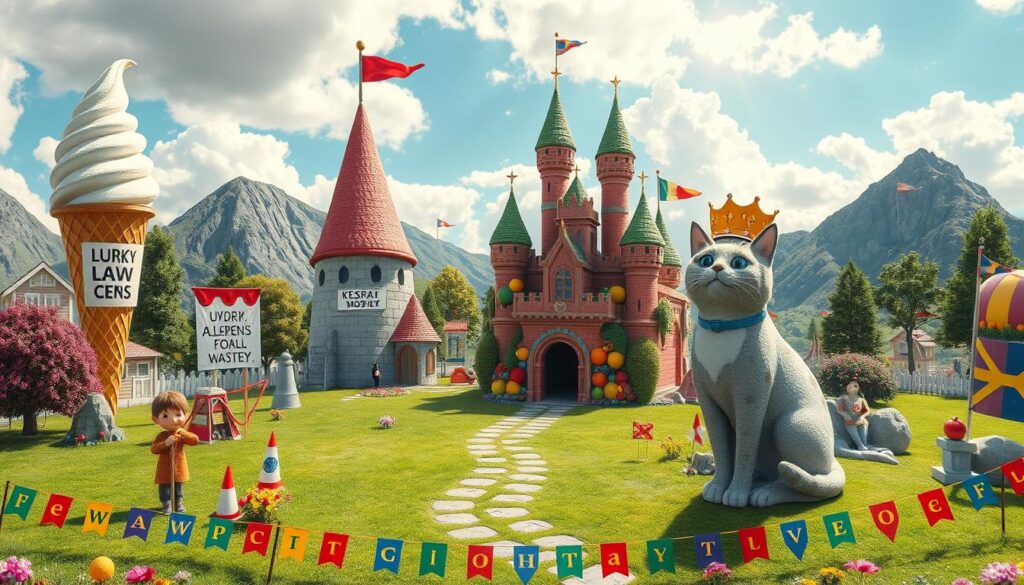

Micronations and Their Relationship with Established Countries
The world of micronations is complex and often overlooked. These self-proclaimed countries may seem whimsical but face big challenges. Most micronations are ignored by the countries they claim to be part of.
Recognition Challenges
Some micronations try to make diplomatic connections, but getting recognized is hard. Sealand, for example, has tried to make friends with other countries. But, its status as a country is not widely accepted.
The Organisation of Active Micronations (OAM) and the League of Small Nations help micronations meet. But, these groups have little power.
Micronations struggle with legal and economic issues. The Hutt River Province in Australia had to close due to a big tax bill. The founder of the Kingdom of Germany, Peter Fitzek, was jailed for illegal activities.
Diplomatic Efforts
Some micronations get a bit of recognition from local authorities. Atlantium lets people move freely and doesn’t need visas. Ladonia wants to buy land for its people, looking at Spain or Italy.
Ambassadors to micronations usually just visit. Some micronations think any place with their flag is an embassy. These efforts show micronations’ wish to be part of the world.
“Micronations face significant challenges in gaining recognition from established countries, but their persistent efforts to engage in diplomatic relations reflect their desire to establish a presence on the global stage.”
The Economic Aspect of Micronations
Micronations show off their creativity with unique economic systems. They issue their own money, stamps, and passports. This is not just for fun but also to make money. Tourism is a big deal for some, drawing in visitors who find these tiny states fascinating.
Funding Sources
The Principality of Sealand is a great example. It makes money by selling noble titles. Some micronations even use new money systems or blockchain to be financially independent.
Tourism Opportunities
- Micronations use their unique status to attract tourists. Visitors get to see a different culture and government.
- The Principality of Sealand is a hit with tourists. People come to see the former military fort turned nation.
- Places like the Republic of Molossia and the Grand Duchy of Flandrensis also welcome tourists. They do this to make money and get noticed.
Even though micronations are small, they’re big on creativity. They find new ways to fund themselves and attract tourists. This shows how adaptable and resourceful these tiny states are in the world of micronational economies and tourism.
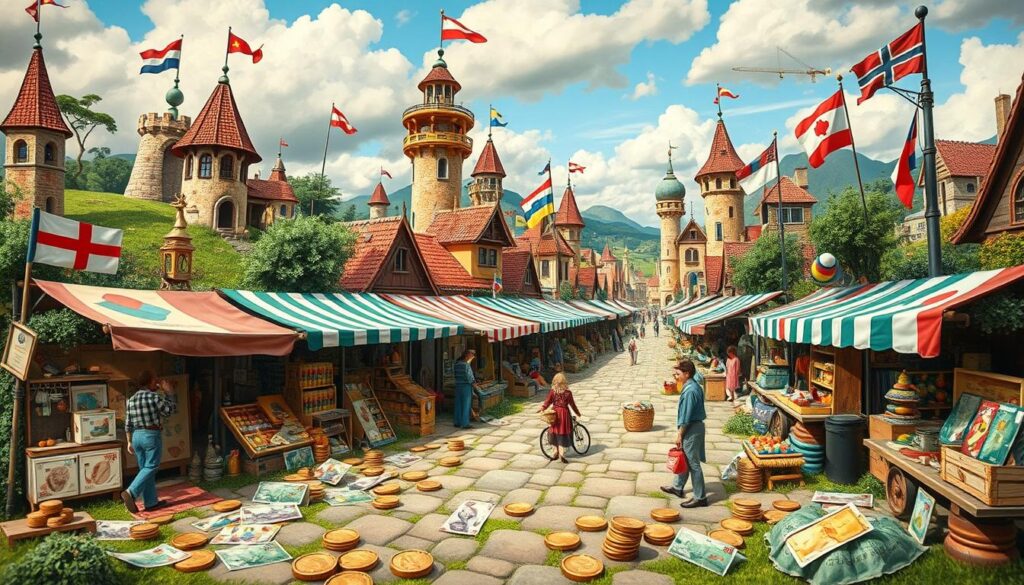

“Micronations are a testament to the human desire for self-determination and the creative spirit of those who seek to forge their own path, even on the smallest of scales.”
Cultural Practices in Micronations
The world of micronations is full of life, beyond politics and economics. It’s a place where unique cultures and artistic expressions thrive. These self-proclaimed countries stand out, weaving a rich tapestry of diversity and creativity.
Festivals and Traditions
Many micronations celebrate their own way, with special festivals and traditions. For example, Sealand celebrates “Sealand Day” with patriotic events. Molossia’s “National Day” is filled with cultural performances and national symbols.
Unique Art and Music
Artistic expression is key in micronational culture. Places like Ladonia have their own languages and art traditions. Sculptors and painters create works that show their micronational spirit. Music is also important, with national anthems and songs that reflect their culture.
These cultural practices shape the identity of these countries. They attract visitors and build a sense of community. Micronational culture shows the endless creativity and individuality in these alternative political landscapes.
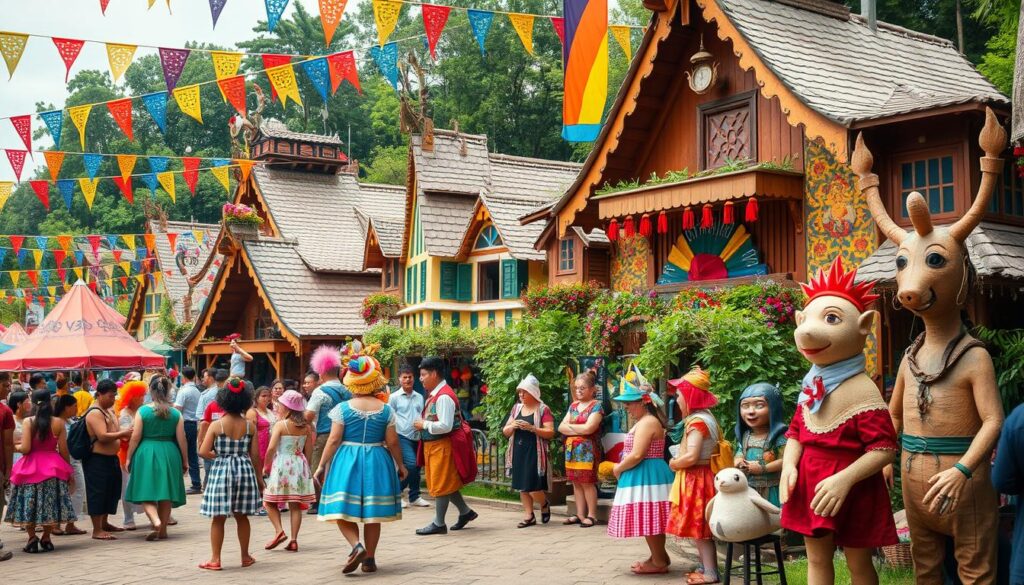

“Micronations are not just about political statements or economic independence – they are also a realm where unique cultural practices thrive, infusing the world with artistic expression and diversity.”
The Future of Micronations
The world is changing fast, and so is the future of micronations. Technology and new ideas about sovereignty are leading the way. We might see more virtual or blockchain-based micronations. These digital spaces could let people and groups show their independence.
A project called Asgardia is working on a big idea. It wants to create the first nation in outer space. This shows how micronations could change the world, especially as we all connect more.
Trends and Predictions
Even if most micronations aren’t recognized, they could still make a big impact. They might change how we think about government and culture. Thanks to social media and the internet, micronations could get more attention and influence.
- The rise of virtual and blockchain-based micronations
- Initiatives like Asgardia exploring the future of space-based sovereign entities
- Micronations leveraging digital platforms to increase their visibility and influence
Potential Impact on Politics
The future of micronations could shake up old ideas about countries and politics. These small nations are trying new ways to govern and express culture. They might teach us a lot about how to run things differently.
“Micronations are engaging in rituals of statehood rather than contesting them, reflecting a strategic choice in pursuing sovereignty.”
Even though micronations face many challenges, they show our need for freedom and new ways to organize society. As we all get closer together, these unique places could have a big say in world politics.
Engaging with Micronations
The world of micronations is growing, offering many ways to get involved. You can visit, become a citizen, or just learn more. There are plenty of chances to dive into this unique world.
How to Visit or Support
Many micronations welcome visitors. They offer tours or the chance to buy citizenship or noble titles. For example, the Principality of Sealand issues passports and stamps.
The Republic of Molossia invites tourists to explore and join cultural events. You can support micronations by following their social media or buying their merchandise. Or, you can get more involved in their governance or cultural activities.
Participating in Micronational Events
There are also events and conventions to join. MicroCon, held every two years, is a great place to meet micronations. It’s a chance to talk, share ideas, and maybe even start diplomatic ties or business partnerships.
By attending these events, you can learn more about micronations. You’ll get to know their histories and political systems. It’s a great way to understand the diverse world of self-proclaimed countries.
Source Links
- https://en.wikipedia.org/wiki/How_to_Rule_Your_Own_Country:_The_Weird_and_Wonderful_World_of_Micronations
- https://en.wikipedia.org/wiki/Micronations:_The_Lonely_Planet_Guide_to_Home-Made_Nations
- https://www.cnn.com/travel/article/micronations/index.html
- https://en.wikipedia.org/wiki/Micronation
- https://en.wikipedia.org/wiki/List_of_micronations
- https://www.thecollector.com/micronations-you-should-know/
- https://www.lonelyplanet.com/articles/secret-marvels-top-10-micronations
- https://www.sfhscollegeprep.org/news-detail?pk=1222027
- https://www.forbes.com/sites/jimdobson/2023/09/21/how-to-rule-your-own-country-inside-the-outrageous-world-of-micronations/
- https://www.britannica.com/topic/micronation
- https://link.springer.com/article/10.1007/s44206-023-00067-x
- https://blog-iacl-aidc.org/2021-posts/2021/12/16/micronations-and-statehood-why-pretend-to-be-a-state
- https://link.springer.com/article/10.1007/s44206-023-00069-9
- https://www.21stcentech.com/technology-and-politics-in-the-21st-century-new-governance-new-micro-nations-new-experiments/
- https://seriouslysocial.org.au/podcasts/micronations/
- https://academic.oup.com/icon/article-abstract/19/1/71/6247754
- https://www.bbc.com/future/article/20220407-the-country-that-became-a-micronation-capital
- https://micronations.wiki/wiki/Micronational_diplomacy
- https://micronations.wiki/wiki/Micronational_Economic_Group
- https://micronations.wiki/wiki/List_of_micronations_by_economic_system
- https://nomadmania.com/guide-to-micronations/
- https://www.shimajournal.org/anthologies/micronationality.php
- https://en.wikipedia.org/wiki/Micronations_and_the_Search_for_Sovereignty
- https://futuristspeaker.com/business-trends/seven-predictions-for-the-coming-age-of-micronations/
- https://mises.org/mises-wire/micronations-international-law-how-us-policy-could-improve-fortunes-upstart-libertarian-countries
- https://www.rnz.co.nz/national/programmes/sunday/audio/2018847227/the-curious-history-of-the-world-s-micronations
